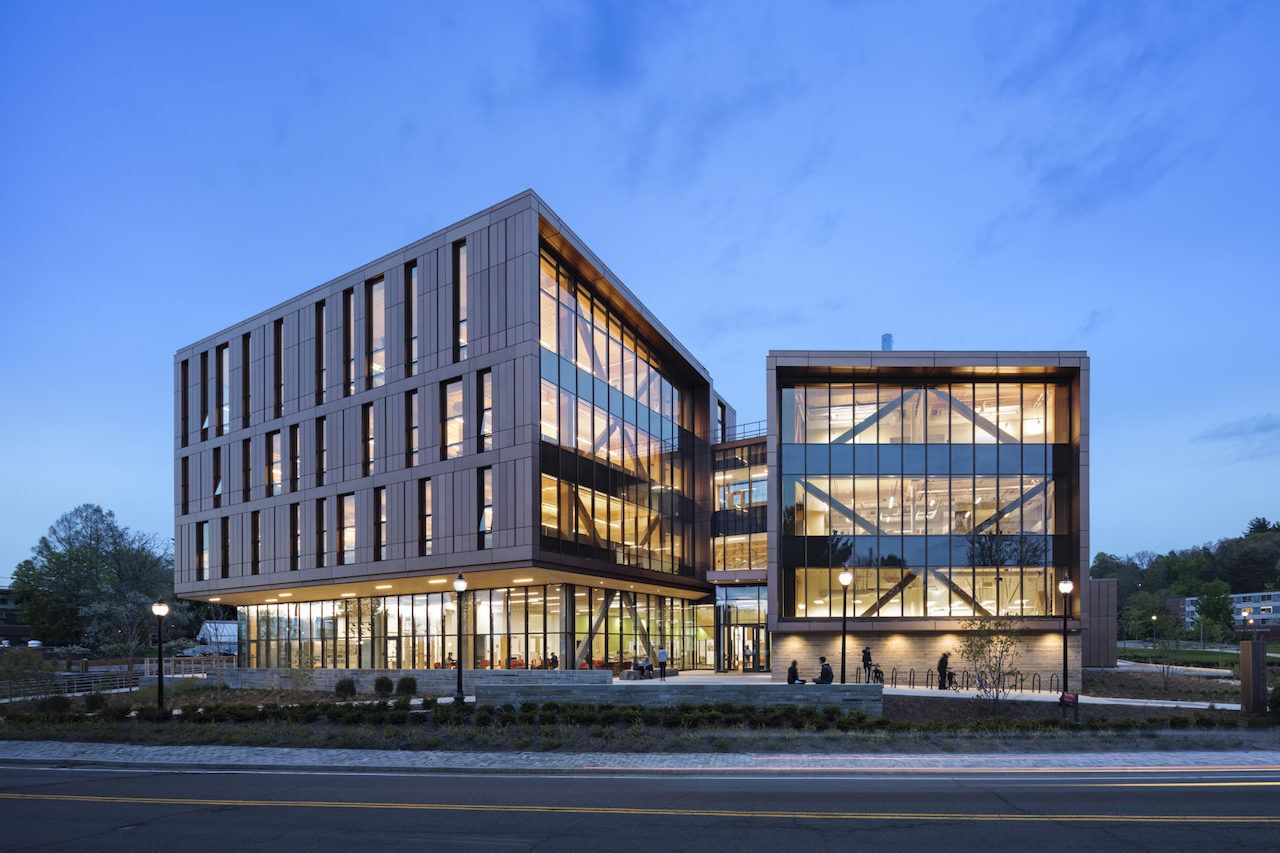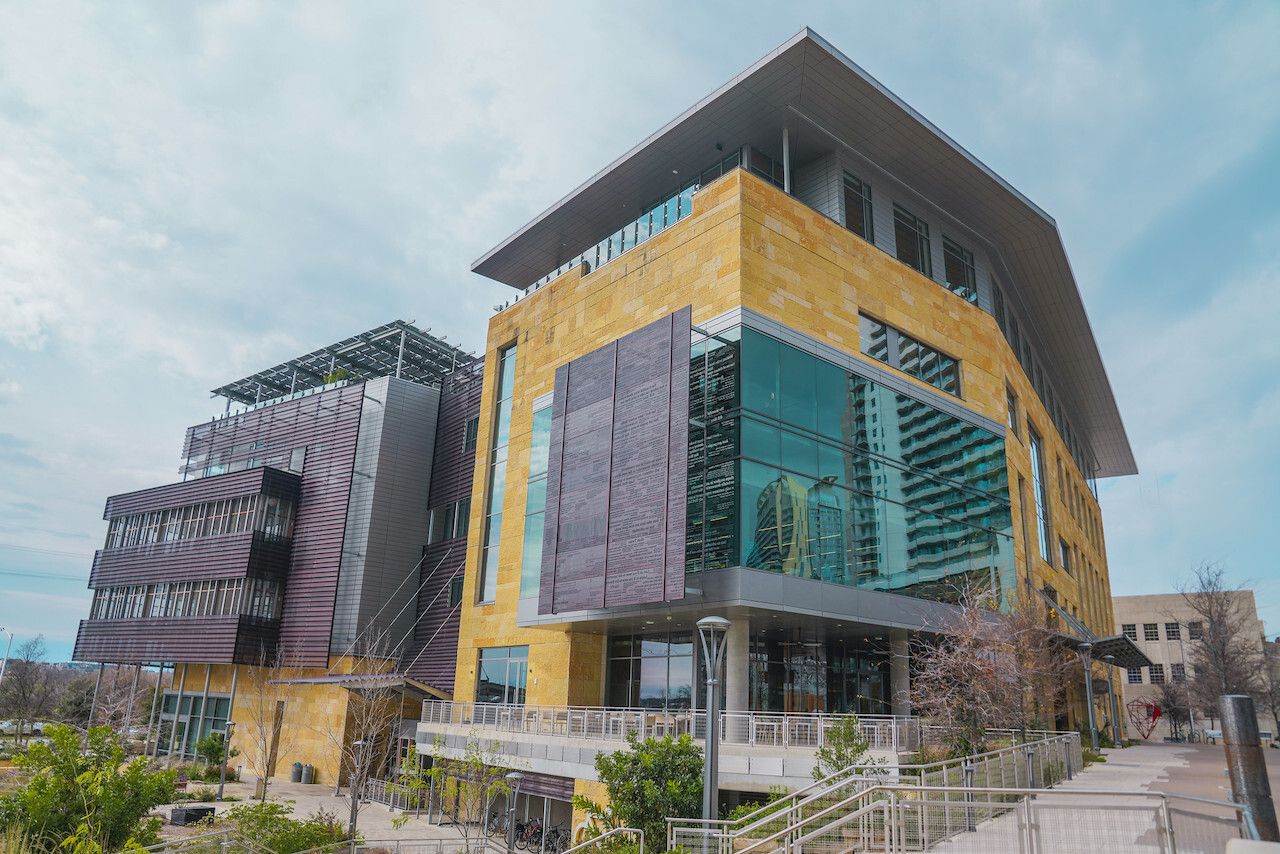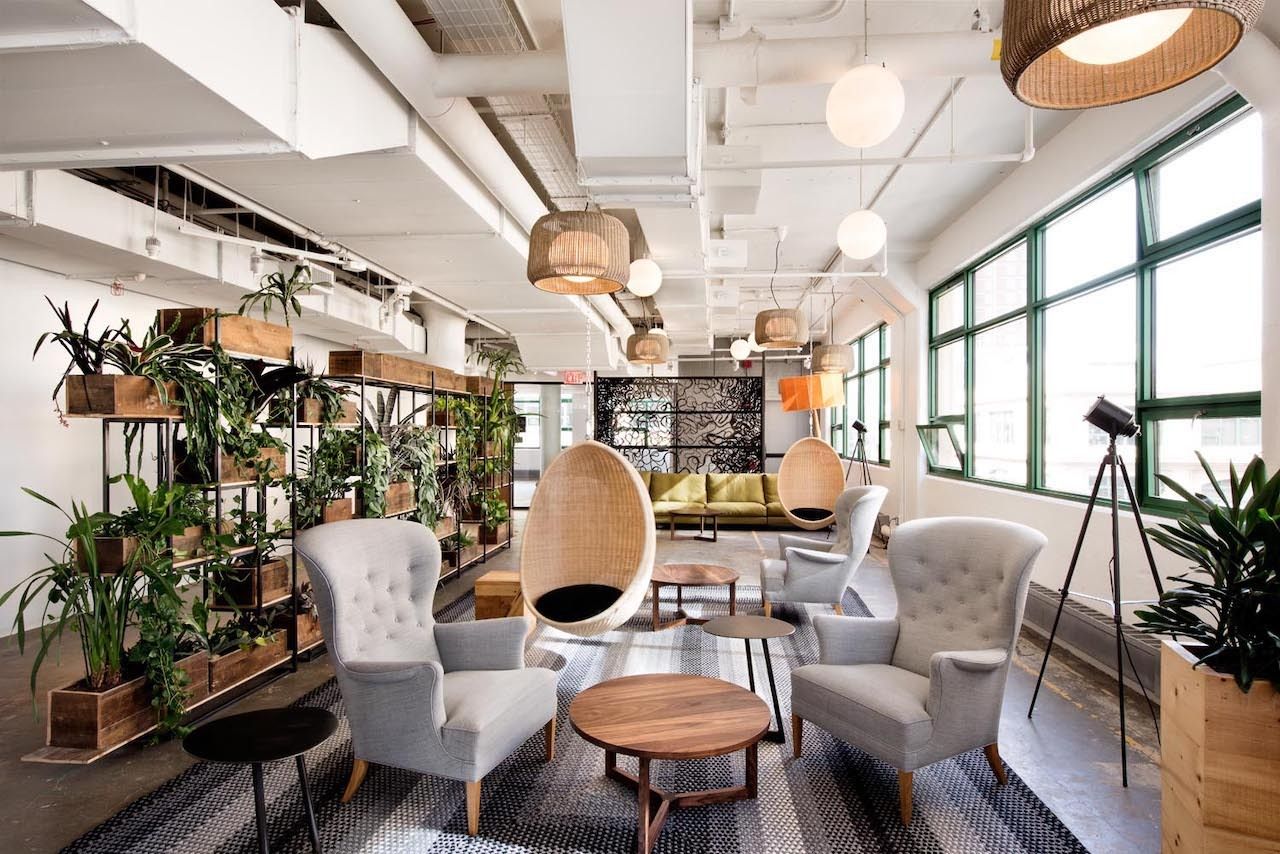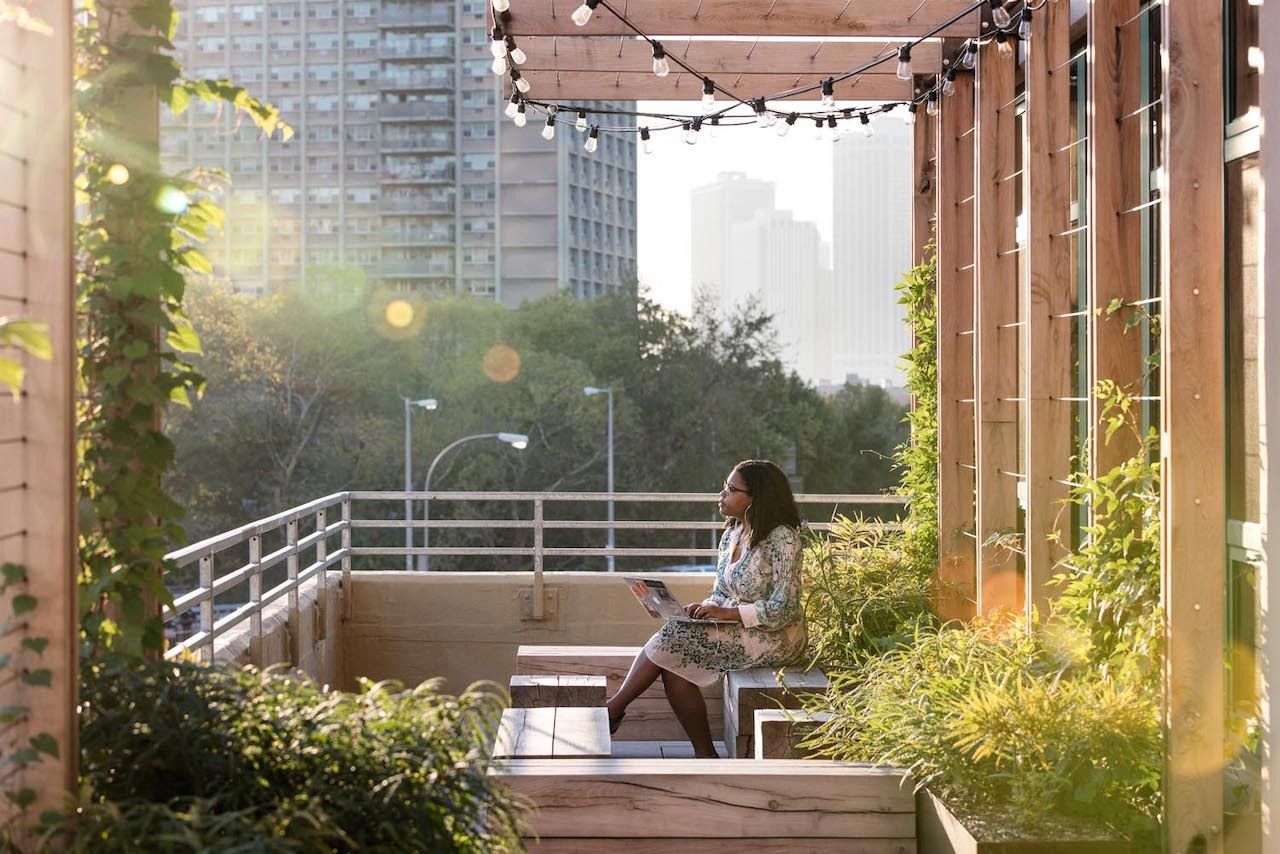This is The Climate Win, the most positive sustainability news around the world every week.
The American Institute of Architects has announced its 2020 COTE® Top Ten awards, which recognizes excellence in sustainable architecture and energy-efficient design. Winners include two libraries, a US Land Port of Entry in New Mexico, a social justice center and a houseless persons project, and multiple university campus buildings. All are striking in both design and function, and this week’s Climate Win looks at three that stand out the most.
One inspiring thing about all these buildings is a basic fact: they exist. Positive sustainability news often consists of pledges that won’t come to fruition for years or changes in government policies whose effects will be felt over time — leaving little for us to actually see or experience, here and now. In contrast, these winners from the 2020 COTE® Top Ten program are places you can actually visit to appreciate the future of eco-friendly design.






